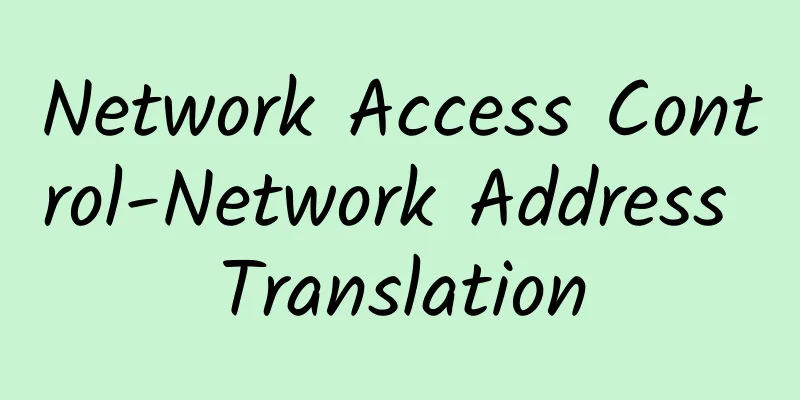“Double Eleven” flash sale strategy: Which is faster, 5G or Wi-Fi 6?

|
The second wave of "Double Eleven" is coming soon. Do you want to grab your favorite products at the most suitable price? This is not an easy task.
In addition to having powerful information channels and integration capabilities, you also need a good mobile phone and a fast enough network! If "fast" and "stable" are used as the standards, two "players" stand out in wireless communications, namely 5G and Wi-Fi 6. So, which one is better, 5G or Wi-Fi 6? 1. What is the difference between 5G and Wi-Fi 6? 5G refers to the fifth generation of mobile communication technology, while Wi-Fi 6 is a wireless local area network standard. From a conceptual and technical point of view, the two are not comparable and are not the same thing at all. 5G has a wider scope, covering all the details involved in the communication process, including a variety of communication protocols and standards. In essence, 5G is still a digital cellular network, which means that the area that needs to be connected is divided into many small areas, each of which is a cell, just like a honeycomb. In each small area, a base station provides network for this area, and after crossing the area, another base station provides network. The difference is that 5G uses a combination of macro base stations and micro base stations, and the regional division is more complicated. Wi-Fi 6 is like a "distributor" responsible for distributing the myriad of information in the online world to your mobile phone, computer, TV, and even smart refrigerator and other electronic devices at home. At the same time, it is also a "liaison" that allows these devices to communicate with each other. For example, if you want to use your mobile phone to control your TV and use it as a remote control, you must first ensure that the mobile phone and TV are connected to the same Wi-Fi 6. However, as modern people who are always connected to their mobile phones and the Internet, we have to deal with 4G/5G and Wi-Fi all the time in our lives. I believe that everyone must have experienced the network freeze at the moment of switching between Wi-Fi and 4G/5G, and must have secretly compared which one is faster. Therefore, it makes sense to discuss 5G and Wi-Fi 6 together. They are both "wireless" and can use electromagnetic waves to connect your mobile phone to the wonderful "Internet world". Moreover, if we look at the transmission and reception process of wireless signals alone, 5G and Wi-Fi 6 do have some similarities: Information is sent from the base station, transmitted via the wireless link, and then received by the wireless host (the user's terminal, such as a mobile phone, computer, etc.). Similarly, your terminal device can also transmit information to the base station via the wireless link in turn, thus realizing the transmission of information. To put it simply, you are connected to the Internet, and it is still wireless. Of course, the signal strength in the wireless link will weaken as obstacles and distance increase, and it will also be interfered by wireless signals from other signal sources (such as Bluetooth, microwave ovens). Let’s take a look at the powerful technologies used in 5G and Wi-Fi 6. 2. What are the black technologies in 5G? 5G is an upgraded version of 4G, far exceeding 4G in terms of network speed and coverage. You should know that 5G uses Massive MIMO (massive multiple input multiple output) technology 4G base stations generally have 8 inputs and 8 outputs. A complete series of information will be divided into 8 parts, and these 8 parts will be transmitted or received almost simultaneously, which improves efficiency. 5G will have more input and output channels, up to 64 inputs and 64 outputs, which well reflects the word "large-scale". If the massive amount of information that needs to be transmitted on the network is compared to the numerous cars on the road, then compared to 4G, the 5G "road" is wider and has more "lanes". You must have had this experience: sometimes when you are far away from the signal tower, the mobile phone signal immediately reverts to 2G. This is because the mobile phone is too far away from the base station in the cellular area. 5G uses non-orthogonal multiple access technology (NOMA), which increases the power domain. The base station will allocate different signal powers to different users at the transmitting end to give full play to the functions of the system, which is equivalent to providing personalized services. Users who are far away from the base station will be allocated a larger signal power, so 5G can have good performance even in high-speed mobile scenarios. When there are more users, the network speed will slow down. This is because the data required by many users are queued for transmission, but the amount of data that the network can accommodate and transmit at the same time is limited. 5G uses an enhanced three-dimensional layered network - an ultra-dense heterogeneous network. It uses a small base station - a micro base station. Generally, macro base stations are responsible for the transmission of low-speed, high-mobility services, and micro base stations mainly carry high-bandwidth services. Micro base stations can be plug-and-play, and can also transmit data for a single cell when the network load is high. The ultra-dense network deployed in this way can withstand the substantial increase in network capacity and ensure the network speed of multiple terminals. With these layers of buffs stacked up, 5G has continuous wide-area coverage and high mobility, higher peak rate, higher spectrum efficiency, larger network capacity, higher air interface latency, higher traffic density and connection density, and higher systematization and intelligence, which can flexibly and automatically adjust the relationship between networks. In this way, 5G will provide efficient network speed even on the "Double Eleven" carnival night with a peak order of 544,000 orders per second. 3. What are the strengths of Wi-Fi 6? Wi-Fi 6 stands for IIEEE 802.11ax, the latest version of the IEEE 802.11 wireless LAN standard. It uses OFDMA (orthogonal frequency division multiple access) to achieve faster data transmission speeds. At the same time, Wi-Fi 6 continues the MU-MIMO (Multi-User-Multiple Input Multiple Output system) brought by Wi-Fi 5, which allows a wireless AP (access point, that is, a base station in the basic service set) to send data to multiple clients at the same time. The MU-MIMO function of Wi-Fi 5 only supports downlink data, while the MU-MIMO function of Wi-Fi 6 has evolved a lot - it supports both downlink and uplink. The maximum specification supported by Wi-Fi 5 is 4×4 MU-MIMO, while Wi-Fi 6 supports 8×8 MU-MIMO, which means that uplink and downlink MU-MIMO data packets can be shared with 8 terminals at the same time. The number of devices that can be connected has doubled, isn't it amazing? In order to provide users with greater Wi-Fi capacity while controlling interference, Wi-Fi 6 uses BSS Coloring technology. BSS Coloring can mark different APs with different "colors", allowing multiple APs to operate on the same signal channel and intelligently manage multiple users' parallel transmissions, which greatly reduces the user's data queuing time, improves transmission efficiency, and of course makes the network experience smoother. Compared with Wi-Fi 5, Wi-Fi 6 has a maximum rate of up to 9.6Gbit/s (gigabits per second) and a minimum latency of 10ms. It can support up to 128 people surfing the Internet at the same time and help terminals reduce power consumption by about 30%. Isn't that amazing? Overall, both 5G and Wi-Fi 6 optimize data transmission speed and anti-interference, expand network capacity, and improve intelligence to enhance user experience. Which one is faster, Wi-Fi 6 or 5G? The peak speed of the 5G protocol can reach 20Gbit/s, while Wi-Fi 6 can reach up to 9.6Gbit/s. 5G does have a significant advantage in speed. However, their actual performance is still affected by many other factors, so it depends on the specific situation. Hey, are you a little confused after reading the above content? Let me take you to review it. First of all, if 5G users have data packages from multiple operators or multiple devices, they can conduct actual tests and comparisons in advance and make multiple preparations. Whether Wi-Fi 6 is easy to use depends largely on your home's upstream backbone network. If your home network is not fast, no matter how good the Wi-Fi technology is, it will be useless. The second step is to consider other factors besides the network. First, make sure your phone is performing well and will not lag. Before grabbing the app, clean up the device memory and application cache, and try not to run multiple apps at the same time to prevent the device from lag. The third step is to set a reminder for the sale, and be quick. Don't be dazed or oversleep. Here I wish you a successful "Double Eleven" shopping spree and a happy reading. |
<<: 5G Imagination in the Internet of Vehicles Makes Transportation Smarter
>>: Headline: Determine whether it is an IP address
Recommend
How can operators tap into the 5G dividend when they have over 600 million 5G users?
Currently, the 5G era is accelerating towards us....
Five hot and four cooling trends in infrastructure and operations
The IT world is constantly changing, with new too...
Three-minute review! A quick overview of 5G industry development trends in October 2021
After the rapid development in 2020, 2021 is a cr...
The total investment of China Mobile, China Unicom and China Telecom does not exceed 34.2 billion! 5G cannot be swallowed in one go, so it needs to be eaten slowly.
As 5G enters its first year of commercial use, th...
Is the WiFi slow and lag the router? The phone is to blame
Under the guidance of the idea of increasing mo...
Ten major events that will affect the development of China's Internet industry in 2021
On January 11, at the 2022 (12th) China Internet ...
Network Performance Monitoring and Diagnostics Market Guide (2020 Edition)
With the acceleration of cloud migration and the ...
ColoCrossing US VPS 50% off/Bare Metal Cloud 35% off, $1.97/month-1GB/25G SSD/20TB@1Gbps
ColoCrossing Easter promotion has started, with 5...
How do packets and routing tables forward data in the network? Learn in one minute
1. Routing Table When the frame reaches the route...
Hand-write a Nodejs program that imitates WeChat login
[[357291]] Preface First, let’s take a look at a ...
With intelligent networking and remote working, Dandelion allows you to spend the New Year without having to work overtime!
Grabbed a ticket to go home for the Spring Festiv...
How is HostYun? Simple test of HostYun Hong Kong EQ-CMI line VPS
There is no discount information, so continue tes...
What to do if you forget your router password? Do it yourself without asking for help
Now we are in the Internet age, the Internet make...
[Black Friday] HostingViet: 50% off Vietnam VPS/email services starting from 160 yuan/month, buy 1 year and get 2 months free
HostingViet has launched a Black Friday promotion...
Fast, intelligent, and secure cloud application delivery is the new trend in 2017! F5 invites you to start a more free cross-cloud journey
[51CTO.com original article] Cloud computing has ...









